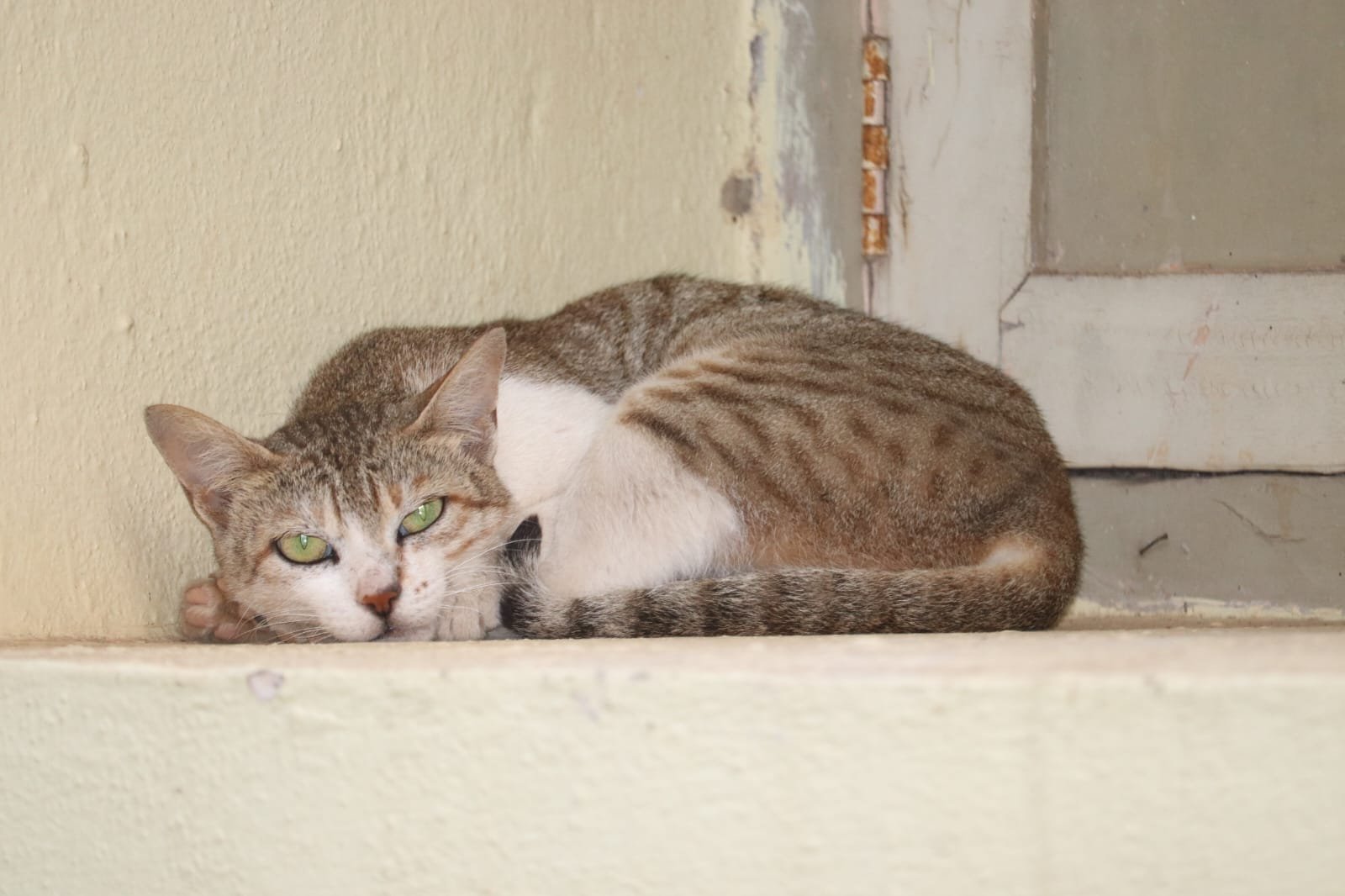Have you ever wondered what it truly means to be the center of your cat’s universe? Imagine being the one constant they can depend on, the calm in their storm, and the safe harbor when life feels overwhelming. Cats may seem independent, but beneath those mysterious eyes lies a deep longing for comfort, routine, and trust. Being your cat’s anchor is about much more than food and play—it’s about giving them a sense of security that transforms their world. The journey might surprise you, and it’s filled with moments that melt your heart, challenge your patience, and make you laugh in ways you never expected. So, are you ready to become that grounding force in your furry friend’s life? Let’s dive into what it really takes to be the anchor your cat needs, every single day.
Understanding the Nature of Cats

Cats are often misunderstood as aloof or indifferent, but their behavior is deeply rooted in their instincts. These beautiful creatures are both predators and prey in the wild, which means they need security and familiarity to feel truly safe. Recognizing this dual nature is the first step toward being an anchor for your cat. Understanding that your cat’s independence is often a mask for vulnerability helps you approach them with empathy and patience. Every flick of their tail or purr is a form of communication, telling you what they need. When you tune in to their subtle cues, you become more than just a pet owner—you become a trusted companion. Cats thrive on predictability and understanding, making your role as their anchor even more vital.
Building Trust Slowly and Surely

Trust is the foundation of any strong relationship, especially with cats. Unlike dogs, cats don’t give their trust freely; they need time to observe and learn that you are safe. Approach your cat gently, avoid sudden movements, and let them come to you at their own pace. Sit quietly in the same room and allow them to explore your presence. Offer treats and soft words without forcing interaction. Over time, these small gestures build a reservoir of trust, making your cat feel secure. When your cat knows you respect their boundaries, they become more willing to seek comfort from you, especially during stressful moments.
Creating a Consistent Routine

Cats are creatures of habit, and they find great comfort in predictable routines. Feeding, playtime, and cuddle sessions at the same times each day help your cat feel grounded. They quickly learn to anticipate what comes next, which eases anxiety and builds confidence. Consistency in daily activities reduces stress, especially in multi-cat households or when changes occur in the environment. Even small routines, like greeting your cat in the morning or saying goodnight, become signals of stability. Being the anchor in your cat’s life means showing up for them, day in and day out, no matter what else is happening.
Providing a Safe Environment

A safe home is the ultimate anchor for any cat. Ensure your living space is free from hazards such as toxic plants, dangling cords, or small objects they might swallow. Provide cozy hiding spots and high perches where your cat can retreat and observe their world. Cats feel safest when they have control over their territory, so let them claim favorite spots. Consider using calming diffusers or soft blankets to create a comforting atmosphere. When your cat feels secure in their physical environment, they are far more likely to relax and trust you emotionally.
Offering Emotional Stability

Your mood and energy directly impact your cat’s emotional state. Cats are incredibly perceptive—they pick up on stress, anger, or sadness in the home. Strive to be a calm and reassuring presence, especially during times of chaos. Speak softly, move gently, and offer gentle pets or cuddles. When your cat senses your steadiness, they feel reassured and safe. Offering emotional stability isn’t just about being calm during storms—it’s about celebrating joyful moments too. Your laughter, smiles, and loving attention become anchors in your cat’s heart.
Mastering the Art of Gentle Touch

Physical affection is a language all its own for cats, but every cat has their own preferences. Some cats crave belly rubs, while others prefer a scratch behind the ears. Take time to learn what your cat enjoys by watching their body language. Respecting their boundaries shows you care about their comfort. Use slow, gentle strokes and let your cat guide the interaction. When your cat feels safe in your touch, they associate you with comfort and warmth. This simple act can turn you into their favorite source of reassurance.
Interpreting Your Cat’s Signals

Cats speak volumes without ever saying a word. Their tails, ears, eyes, and posture reveal their moods and needs. A twitching tail might signal irritation, while slow blinks are often a sign of affection. Learn to read these subtle cues so you can respond appropriately. If your cat hides or acts withdrawn, it might mean they’re anxious or unwell. Responding with patience and understanding rather than frustration strengthens your bond. By becoming fluent in your cat’s language, you become the steady anchor they rely on in any situation.
Enriching Their Environment

Boredom can lead to stress and destructive behaviors in cats. Keep your cat engaged by offering a variety of toys, scratching posts, and interactive play sessions. Rotate toys regularly to maintain their interest. Window perches allow your cat to watch birds and squirrels, satisfying their hunting instincts safely. Puzzle feeders and treat-dispensing toys stimulate their minds and bodies. Enrichment isn’t just about entertainment—it’s about giving your cat a sense of purpose and joy, making your home their favorite place to be.
Feeding with Love and Care

Mealtimes are not just about nutrition; they’re opportunities to bond. Feed your cat high-quality food at regular times, and try to make feeding a positive experience. Some cats enjoy eating with you nearby, while others prefer privacy. Pay attention to your cat’s individual preferences and adjust accordingly. Use treats sparingly as rewards for good behavior or during training sessions. When your cat associates you with delicious meals and thoughtful care, you become a source of comfort and security.
Being Present During Stressful Times

Life is full of changes—moving, new pets, visitors, or loud noises can all stress your cat. During these times, your role as an anchor is more important than ever. Provide extra reassurance with gentle words and familiar routines. Allow your cat to hide if they need to, and never force interactions. Offer their favorite toys or treats to help distract and comfort them. By staying calm and supportive, you show your cat that you are their safe place, no matter what life throws their way.
Encouraging Healthy Play

Play is a vital part of any cat’s life, providing both physical exercise and mental stimulation. Schedule daily play sessions with toys that mimic prey, such as feather wands or laser pointers. Let your cat chase, pounce, and explore their wild side. Playtime isn’t just fun—it strengthens your bond and helps your cat release energy in positive ways. After a satisfying play session, many cats love to snuggle, feeling content and secure with their favorite person.
Protecting Their Health

Your cat’s health is a top priority, and being their anchor means being proactive. Schedule regular veterinary check-ups, keep vaccinations up-to-date, and watch for changes in behavior or appetite. Groom your cat regularly to prevent mats and check for any lumps or bumps. Provide fresh water and a clean litter box at all times. When you take care of your cat’s health needs, you show them that their wellbeing matters—building a foundation of trust and reliability.
Respecting Their Independence

While cats enjoy companionship, they also need time alone. Respect your cat’s need for space by allowing them to retreat when they want. Avoid picking them up or disturbing them when they’re resting. Independence doesn’t mean your cat loves you any less—it’s simply part of who they are. By honoring their boundaries, you reinforce your role as a respectful and understanding anchor in their life.
Creating Special Bonding Rituals

Every cat loves a little special treatment. Develop unique rituals that belong only to you and your cat, such as bedtime snuggles, morning greetings, or a favorite game. These rituals create positive associations and deepen your bond. Cats remember these moments and often seek them out, looking to you for comfort and connection. Over time, these shared experiences become the heart of your relationship.
Staying Calm During Veterinary Visits

Trips to the vet can be terrifying for cats. Your calm demeanor can make a world of difference during these stressful outings. Speak softly, bring a familiar blanket, and use a secure carrier. If possible, practice short trips in the carrier at home to help your cat get used to the experience. After the visit, reward your cat with treats and gentle affection. Your steady presence reassures them that, even in scary situations, they are not alone.
Supporting Older or Special-Needs Cats

As cats age or face health challenges, their needs change. Be attentive to signs of pain or discomfort, and adjust your care routines accordingly. Older cats may need softer bedding, easier access to food and litter, or more gentle play. Special-needs cats might require medication or extra patience during daily care. By adapting to their changing needs, you show your unwavering commitment, reinforcing your role as their anchor through every season of life.
Introducing New Pets or Family Members

Adding new animals or people to your home can disrupt your cat’s sense of security. Introduce changes slowly, allowing your cat to adjust at their own pace. Provide safe spaces where your cat can escape and observe from a distance. Offer treats and praise for calm behavior, and never force interactions. Your support and reassurance help your cat feel safe, knowing their place in your heart and home remains unchanged.
Traveling and Temporary Separations

Sometimes, life requires you to leave home or arrange for pet sitters. Prepare your cat by maintaining routines as much as possible and leaving familiar scents around the house. Share detailed care instructions with anyone looking after your cat. When you return, greet your cat warmly and resume your regular rituals. Even during separations, your thoughtful preparation anchors your cat’s sense of security and trust.
Understanding the Power of Your Voice

Your voice is a powerful tool in reassuring your cat. Soft, gentle tones help calm anxious cats, while excited or loud voices can startle them. Speak to your cat throughout the day, whether you’re offering encouragement, calling them for meals, or simply sharing your thoughts. Many cats learn to recognize their names and respond to familiar phrases. Your voice becomes a comforting presence, letting your cat know you’re always there.
Celebrating Your Cat’s Unique Personality

Every cat is different, with their own quirks, preferences, and personalities. Take time to discover what makes your cat special, from their favorite sleeping spot to the funniest way they chase a toy. Embrace their individuality and let them express themselves. When you celebrate your cat for who they truly are, you deepen the sense of belonging and safety they feel with you. Being an anchor means loving your cat wholeheartedly—just as they are.
Adapting to Life’s Changes Together

Life is full of unexpected changes—new jobs, moves, or family events can shake up your world and your cat’s. By maintaining routines and offering extra attention during these times, you help your cat adjust. Stay patient and understanding as your cat processes new environments or circumstances. Your support teaches them resilience and trust, knowing that you’ll always be their steady anchor, no matter where life leads.
Hi, I’m Bola, a passionate writer and creative strategist with a knack for crafting compelling content that educates, inspires, and connects. Over the years, I’ve honed my skills across various writing fields, including content creation, copywriting, online course development, and video scriptwriting.
When I’m not at my desk, you’ll find me exploring new ideas, reading books, or brainstorming creative ways to solve challenges. I believe that words have the power to transform, and I’m here to help you leverage that power for success.
Thanks for stopping by, Keep coming to this website to checkout new articles form me. You’d always love it!






